"White Supremacy and the Multicultural Imagination in Ray Bradbury's Afrofuturist Stories of Mars"
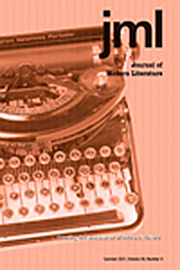
An act of recovery, this article reassesses “Way in the Middle of the Air” (1950) and “The Other Foot” (1951), paired short stories exploring mid-twentieth-century racism through the conceit of an African American exodus to Mars. Though Bradbury was not an Afrofuturist, both stories are shown to use Afrofuturist themes and concerns when exploring white anxieties about white supremacy. Tracing the publication history of each story, both are read through Michael Vannoy Adams’s concept of the multicultural imagination, a means by which prejudice is met and dispelled in the psyche. “Way in the Middle of the Air” unmasks the fragility of white supremacy as an ideology, while “The Other Foot” stands as an exercise for white readers (and its white author) to walk a mile in the feet of blacks who had suffered the violence of racism. Bradbury emerges as a white enemy of white supremacy and early ally to Afrofuturism.
Published in Journal of Modern Literature (Indiana University Press, 2021)

"'A great admirer of American education': Robinson as professor and defender of 'America's best idea'"

Written with Kathryn E. Engebretson
For a quarter century, Marilynne Robinson taught graduate students pursing MFAs in creative writing at the prestigious Iowa Writers’ Workshop. As such, she holds a significant place in the storied lineage of that institution, having supervised writers who will never reach prominence as well as those, like Ayana Mathis and fellow-Pulitzer-winner Paul Harding, who have. Harding, who amusingly described her instruction style as being like that of Moses, has even followed in her footsteps to become a teacher in the Workshop. Upon her retirement in spring 2016, students came forward to celebrate her role as teacher, educator, and guide in their writing life. Her style as a professor of creative writing is worth examining and exploring because that part of her career cannot be ignored. Alongside all of the gifts present in her written works, she made innumerable contributions to greater society and the community around her in Iowa City by fostering and criticizing the work of student writers. The respect she earned through her own accomplishments in writing and education led to President Obama selecting her as his first interviewee for a series of conversations that were published by The New York Review of Books. Their conversation in Des Moines, Iowa, on September 14, 2015, returned several times to education in the United States, which she calls “a triumph of the civilization.” This statement places Robinson politically within the context of American education. Her perspective yokes in interesting ways to contemporary theorists of American education like Michael Apple, Nel Noddings, and Kevin Kumashiro. Much of the advice she gave to her students emerges to present an instructor aware of the bigger picture of American education while maintaining an interpersonal and small-group insistence upon drawing out complexity, emotional truth, and the vulnerable reaches of her pupils’ imaginations.
Published in Marilynne Robinson, Edited by Rachel Sykes, Anna Maguire Elliott, and Jennifer Daly (Manchester University Press, 2022)

"No Love for the Jedi: The Banishment and Persistence of Love in the Star Wars Saga"

The essay tucks into the Jedi approach to love in the Star Wars movies and its sprawling lore. C. G. Jung said, “Where love reigns, there is no will to power; and where the will to power is paramount, love is lacking. The one is but the shadow of the other” (“The Problem of the Attitude-Type” 53). This tension—between love and power—is at the heart of the Skywalker saga, where Anakin gives in to power in his desire to protect people he loves. Of course, he famously fails, becoming Darth Vader, Dark Lord of the Sith. But the Jedi also miss the mark by banishing love in its romantic and familial aspects, opening the door to Anakin’s fall by failing to cherish essential archetypal experiences in life. In the original film trilogy, love is shown to win out over power, Luke appealing to his broken father’s heart to overthrow Emperor Palpatine. The prequel trilogy offers an inverse of this, with power defeating love when Anakin succumbs to his own pathological wish for control. Also considered are thoughts on love that appear at times in Star Wars books. For instance, Luke’s love and marriage to Mara Jade is analyzed, as is its deletion from lore once Disney bought Lucasfilm and set about rewriting its own Star Wars mythos. The sequel trilogy is also considered in Rey’s Palpatine lineage and how she defeats Palpatine’s power with power, leaving little room for love. And yet the sequel trilogy also offers a greater appreciation for familial love, with Luke carrying out his final act as a brother and Rey declares herself a Skywalker, rejecting her own family of origin.
Published in Critical Insights: Love, Edited by Robert C. Evans (Salem Press, 2022)

"The Meanings of 'King Pest'"
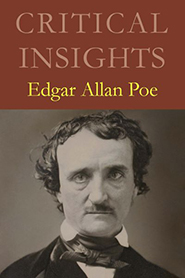
Poe's "King Pest" is analyzed in the contexts of short story theory, allegory, the grotesque, and current experiences in the wake of the COVID-19 pandemic. “King Pest” has beguiled readers since its appearance in 1835. Is it an allegory for President Andrew Jackson’s decadence after closing the nation’s deficit? Is it disgusting for the sake of being disgusting? Flannery O’Connor reluctantly admitted Poe’s fiction was a deep and early influence on her own work while Robert Louis Stevenson, after reading this story, was unable to sleep and eat for a day. The creator of Dr. Jekyll and Mr. Hyde claimed Poe had lost his humanity in writing it. Such an extreme reading seems silly today, given that “King Pest” resembles a lot of media produced in the last forty years. In many ways, the story reads as if it was far ahead of its own time, though it still manages to confuse and confound. A short summary is provided, revealing a plot in line with cartoons and a dark sense of humor. Additionally, the story’s setting—pandemic London—is examined in light of our own time and people’s disregard for health and safety guidelines when a virus is blowing through the world’s population. As such, “King Pest” emerges as a short story that toys with its reader, bringing out their own subjectivity in wildly divergent ways. Poe’s theoretical stance that the short story provides a singularity of feeling is used to ask what that singularity is for “King Pest.” Perhaps for this bizarre little story, it is the shared experience of wondering “What did I just read?”
Published in Critical Insights: Edgar Allan Poe, Edited by Robert C. Evans (Salem Press, 2022)

"On the Road with the Merry Pranksters: Neal Cassady's Influence on the Psychedelic Revolution"

Neal Cassady inspired not only Jack Kerouac but also Ken Kesey and his Merry Band of Pranksters, driving their psychedelic bus Further on its quest eastward across the United States. Drawing from Prankster mythology and history, especially works written by Ken Babbs, this essay explores the way Cassady passed the torch from the Beats to the Pranksters and on to the hippies. Included is an assessment of Tom Wolfe’s gonzo mythmaking in The Electric Kool-Aid Acid Test and how it rightly places Cassady in the role of psychopomp between succeeding generations of the counterculture. The Pranksters’ enduring love and respect for Cassady is also considered in light of Issue 6 of Spit in the Ocean (1981), the indie literary journal published by Kesey and Babbs. In charge of the Cassady issue, Babbs memorialized and eulogized Cassady, putting the Prankster stamp on their respect for the late mercurial counterculture hero who had joined their hijinks. The Cassady that emerges has many sides, with both highs and lows and everything between. Also brought into consideration is Kesey’s short story “The Day After Superman Died” (1979), which fictionalizes—mythologizes—his own personal reaction to Cassady’s untimely and tragic death along a railroad in Mexico. Kesey did not stop there. Over a couple decades, he crafted what became The Further Inquiry, a screenplay in which Cassady’s soul reaches the gates of heaven and is judged, with testimony given by the Merry Pranksters. Cassady’s creative hold on the imaginations of the Pranksters turns out to be something truly significant, lasting the rest of their lives. Both Kerouac and the Pranksters’ influence on Cassady, like the man himself, prove harder to pin down.
Published in Critical Insights: On The Road, Edited by Robert C. Evans (Salem Press, 2022)

"Spirits of Place in Lincoln in the Bardo"
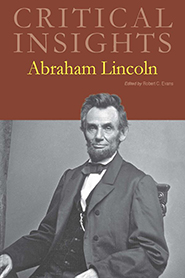
This essay analyzes and historicizes the novel Lincoln in the Bardo by George Saunders in light of Abraham Lincoln, the icon and the man. Published as President Trump took office, the book presents an empathic meditation on Lincoln in the time after his son Willie died. It also leaps into the realm of the Gothic by following Willie’s ghost as it lingers with other lost souls in a graveyard. Correspondence with Saunders adds insight into the novel, such as his view that humility in presidency is important to recognize when he think about Lincoln. D. H. Lawrence’s stance “Never trust the artist. Trust the tale” is challenged in light of each writer’s position on the concept of whether or not to think about what writers have to say about their own work. Something that emerges in Bardo is the opportunity for the reader to better assess their own personal Lincoln, a man many of us today know little about yet who is seen everywhere in our national life. Saunders shows Lincoln in his own time was an icon, and dehumanized in that, in ways like people ascribing a range of eye colors to him. What does it mean when we cannot be utterly certain what color the man’s eyes were? Another aspect explored is the subtle mapping of Tibetan Buddhism onto the afterlife depicted. In many ways, the story is conventional in following the trope of restless spirits trying to cross over to the other side, and yet it makes massive leaps in terms of humor and the very idea of historical fiction. Ultimately, readers are invited to empathize with Lincoln and the other characters that make up the novel.
Published in Critical Insights: Abraham Lincoln, Edited by Robert C. Evans (Salem Press, 2020)

"The Well-Beloved as Anima: A Sketch of a Psychological Archetype"

This article analyzes the protagonist of The Well-Beloved, arguably Thomas Hardy's final novel, in terms of his incessant habit of psychological projection upon three women in three generations of the same family. Jocelyn Pierston emerges as someone with an ingrown fixation on the archetype of the anima, as it flits from woman to woman, never resting there for long. As such, the women remain inaccessible to him, and he to them, intimacy never quite having the chance to develop. Hardy's hopeless main character emerges as a figure of ridicule, while the women he fails to get to know stand distinct and independent despite his attempts to decide who they are. Ideas about the anima discussed in this article are drawn mostly from Jung and James Hillman.
Published in Critical Insights: Thomas Hardy, Edited by Robert C. Evans (Salem Press, 2021)

"Family Fantasy and the Family: Divining the Elliotts through Depth Psychology"

If, as James Hillman put it, “psychology has discovered an entire demonology within family” (A Blue Fire 197), Ray Bradbury’s Elliotts can be understood as enfranchising the archetypal family’s witches, vampires, and mummies with gentleness, goodness, even love. There is even something psychological at work in Bradbury’s capitalization of this cluster of monsters and freaks living on American soil as the Family. This chapter looks at the stories collectively, focusing especially on “Uncle Einar” and “The Homecoming,” in order to better understand the Family as fantasy. Psychotherapist R. D. Laing’s view of family as a fantasy shared by its members finds a happy home when considering the Elliotts: “The family as a shared fantasy image is usually a container of some kind in which all members of the family feel themselves to be, and for which image all members of the family may feel each should sacrifice themselves” (Politics of the Family 9). In this light, From the Dust Returned, wherein Bradbury collected and stitched the Elliott stories together toward the end of his life, is itself the introduction and welcoming in of Timothy, the newest member to the Family, whereby its myth is bestowed. Hillman observed, “[Family] love allows family pathology, an immense tolerance for the hopeless shadow in each, the shadow that we each carry as permanent part of our baggage and that we unpack when we go back home” (201). Bradbury’s stories about the Family fully support this view, whereby its gothic mismatch of members reveals the post-war American myth of family: that this group of horror-show personalities functions ably as a family unconsciously implies that seemingly normal families are often enough quite at home with monstrosities gathered under their own roofs.
Published in Exploring the Horror of Supernatural Fiction: Ray Bradbury's Elliott Family, Edited by Miranda Corcoran and Steve Gronert Ellerhoff (Routledge, 2021)

"A Psychology of Greed in Charlie and the Chocolate Factory"

Roald Dahl's classic book is explored as a meditation upon greed in its many facets. Perspectives on greed from psychologists James Hillman, Erich Fromm, Pamela Power, and D. W. Winnoctt help us to analyze which aspects of greed are present and both pathological and healthy in the story's many characters. For instance, while greed arising in the Golden Ticket winners is shown to pave the path to disfigurement and disgrace, greed is also shown to be Charlie's saving grace in terms of inspiring him to spend that extra dime on an extra bar of chocolate that gets him into Wonka's factory and sets in motion the rest of his fate. Dahl's moralizing is more sophisticated than a simple morality play, presenting the idea that there are conditions and circumstances (starvation in the case of the Bucket family) where greed can play a role in the aim of self-preservation.
Published in Critical Approaches to Literature: Greed, Edited by Robert C. Evans (Salem Press, 2019)

"Rebellion in Star Wars: Forty Years of Princess Leia and the Rebel Alliance"
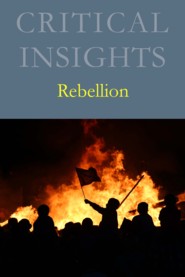
Rebellion within the context of Star Wars is explored in this essay by analyzing the character of Princess Leia. By appraising Leia’s role as an anti-princess, a number of readings of her place in the space opera—and society—are considered. With the sequel trilogy’s introduction of Rey as a female protagonist, many people have minimized the dynamism of Leia’s character in the original trilogy. Her exuberance is acknowledged here, both in terms of her agency and her apparel. The iconic hair buns are shown to be both political and psychological in scope, making her a Rapunzel who will not let down her hair on any terms other than her own in A New Hope. Carrie Fisher’s ruminations on the infamous gold bikini also reframe the outfit as a critique of toxic masculinity, Leia emerging as the one to kill the crimelord who put her in it. Most significantly, Leia is shown to be the most individuated Skywalker twin; while her brother Luke struggles to figure out who he is, Leia has long known herself and her value. As such, she makes a natural leader in the Rebel Alliance, and later the Resistance.
Published in Critical Insights: Rebellion, Edited by Robert C. Evans (Salem Press, 2017)

"'One Destroyed Being': A Post-Jungian Appraisal of Darth Vader"

Darth Vader has appeared in forms ranging from macaroni-and-cheese noodles to a grotesque installed high up on the Washington National Cathedral in Washington, D.C. He is perhaps the most infamous cinematic father in the history of film. Given that creation of the character was deeply influence by the work of mythologist Joseph Campbell, himself a post-Jungian theorist of myth, this essay shows how Jung’s concepts play out in Darth Vader’s character. George Lucas’s work in complicating the character is analyzed alongside those who portrayed and costumed the screen villain. “It is often tragic,” Jung wrote, “to see how blatantly a man bungles his own life and the lives of others yet remains totally incapable of seeing how much the whole tragedy originates in himself, and how he continually feeds it and keeps it going” (Collected Works 9ii, 18). This essay explores how Vader’s triumph in the end is that he does recognize his responsibility as the source of the Skywalker family tragedy, though his devotion to evil prevents him from surviving his final decision to do the right thing.
Published in Critical Approaches to Literature: Psychological, Edited by Robert C. Evans (Salem Press, 2017)

"Luke Skywalker's Individuation"
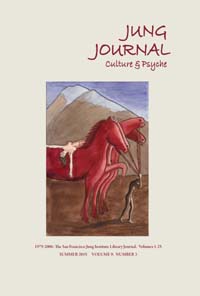
A subtle change in Luke Skywalker's costume at the end of Return of the Jedi is interpreted as symbolic of the psychic transformation professed in Jung's concept of integration of the shadow and activation of the transcendent function. Luke emerges through this analysis as one who confronts and assimilates his shadow, individuating into a balance between the light and dark sides of the Force.
I wrote this essay in the months prior to the release of The Force Awakens, anticipating which version of Luke Skywalker audiences would meet in December 2015. Famously, the one who appeared was silent, delivered up to fans after a twenty-two-year absence from the screen in a cliffhanger ending. It would fall upon The Last Jedi in 2017 to start answering questions about Luke’s identity in the decades following the events of Return of the Jedi. As such, this essay serves as an assessment of Luke’s psychological transformation in the original trilogy of films in light of the Jungian concepts that shaped Joseph Campbell’s thinking on mythology, which in turn shaped the narrative and characters of George Lucas’s space opera.
Published in Jung Journal: Psyche and Culture (Vol. 9.3, Summer 2015)

"Dreaming and Realizing 'The Semplica Girl Diaries': A Post-Jungian Reading"
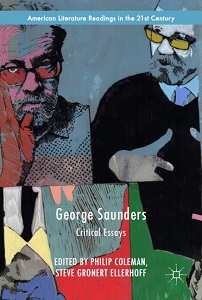
The short story “The Semplica-Girl Diaries,” which appeared in The New Yorker and then Tenth of December (one of the rare short story collections in our time to rank on bestseller lists), took George Saunders twelve years to write. This is a long time for a story to come together, a long meditation that began with a dream. “Well, it’s embarrassing,” Saunders said in a New Yorker interview about the story, as if its original germ arriving in sleep requires an apology. But while the central image of the story occurred in a dream, the finished product is a work of literature, crafted across a lengthy gestation well after its initial oneiric experience. Even its form, a diary taken up to explain what life is like to future generations, lends writer and reader alike the chance to pearl over the baffling image of the living lawn-ornament Semplica-Girls.
Depth Psychology understands that dream and myth come from the same place, and in Jungian terms Saunders’s dream is considered a “big dream,” one that begs conscious exploration. Even The New Yorker felt the need to pair the story with an interview, emphasizing its dreamlike qualities that beg analysis. Saunders also explains of his writing process that, “It’s more feeling than thinking—or a combination of the two, with feeling being in charge, and thinking sort of running around behind.” Thinking and feeling are the opposing judging functions in Jung’s model of consciousness, the other two being sensation and intuition, which form the perceiving functions. If we consider Saunders’s process in terms of Jungian judgment, “The Semplica-Girl Diaries” emerges as a product of dream images that took a dozen years to metabolize through active engagement. This chapter then examines the story’s local inflections of American imperialism and consumer culture against the backdrop of the collective unconscious.
Published in George Saunders: Critical Essays, Edited by Philip Coleman and Steve Gronert Ellerhoff (Palgrave Macmillan, 2017)

"Red Dirt Boogie: Autobiography in the Songs of Jesse 'Ed' Davis"
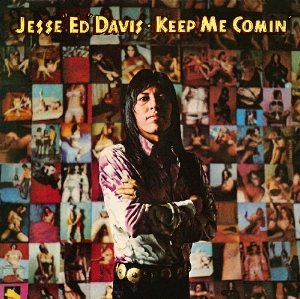
Kiowa rock guitarist Jesse ‘Ed’ Davis’s three solo albums from the early 1970s are examined and appreciated for what they express about his identity at a time of incredible political activism among Native Americans. By contextualizing his songs alongside the occupation of Alcatraz and efforts to end federal policies of Relocation and Termination, Davis emerges as a person who was politically aware. He shared the story of his birth and upbringing in the exuberant “Washita Love Child,” the wounds of schoolyard racism in “Ching, Ching China Boy,” and a multicultural identity in “Red Dirt Boogie, Brother.” These songs are also considered alongside his friendships with famous musicians of his time, especially John Lennon and Bob Dylan, who told Rolling Stone that his first album with John Trudell, AKA Grafitti Man, was 1986's album of the year.
This article was adapted from my master’s dissertation for the Literatures of the Americas program at Trinity College, Dublin. A labor of love, my interest in Davis began in 2000 when I took a class taught by Peter Nazareth at the University of Iowa called Elvis as Anthology. He played for us “Baby Boom Che,” Trudell and Davis’s ode to Elvis Presley. When I discovered Davis had played with Lennon, especially on Walls and Bridges (1974), I wanted to know more about him and started collecting what I could of his recordings, which scatter all over the place since he was one of the great session players. Alongside this, my interest in the experiences and activism of indigenous Americans grew as an opportunity to learn more about the cultures and individuals who are still very much alive despite all efforts to silence them.
Published in American Indian Quarterly (Vol. 40.2, 2016)

"Introduction" (and cover art)

In this eBook, Peter Nazareth analyzes Elvis Presley’s films through a lens of multiculturalism, showing how the world-famous musician incorporated elements from other cultures to celebrate them and emerge as an artist of globalist dimensions. Having been Nazareth’s student and research assistant between 2000 and 2002, he asked me to write the Introduction to the book, a special treat given that he has done so much to mentor me over the years.
Nazareth also enlisted me to design the cover for the eBook.
From the book:
"When all the publicity about my class 'Elvis as Anthology' began in 1992, I faced a lot of jeering and prejudice. A radio interviewer from Chicago asked me, on air, whether my class was going to be in pharmaceuticals or cookery. I said it was going to be in literature: I was going to analyze the work as I did novels. There were three targets: (1) Elvis, as working class; (2) Iowans, as hicks; (3) Me, as foreigner. I discovered that when they do not understand, most Americans, including professional critics, mock and put down from a position of superiority."
Published in Elvis: Rewriting the World with Multicultural Movies by Peter Nazareth (Goa 1556, 2015)

"The Rabbit Who Saw It All Coming: Watership Down and Twentieth-Century Concepts of Shamanism"
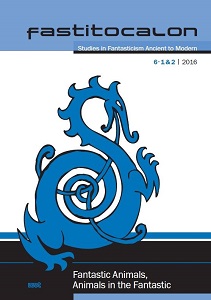
In the second half of the twentieth century, Mircea Eliade and Joseph Campbell, both of them scholars of religion and mythology, took up studies of shamanism from Western perspectives. Eliade’s 1951 book Shamanism: Archaic Techniques of Ecstasy (published in English in 1964) remains an important study to this day. Campbell addressed shamanism most extensively in the first volume of his four-book Masks of God series: Primitive Mythology (1961). Both scholars saw in these so-called rudimentary traditions a spiritual dimension of value and worth to people living so-called modern lives. Both championed shamanic tales of people transformed into animals. This white European/American appreciation for “archaic” and “primitive” ways can be found expressed in narrative form in Richard Adams’s 1973 novel Watership Down, an epic about rabbit bucks striking off to establish a warren of their own. Adams, who quotes Campbell in the novel, presents his conception of the shaman in the form of Fiver, “the rabbit who saw it all coming.” Through visions, sensitivities, and intuitions, Fiver is the shaman counterpart to the novel’s monomythic hero, Hazel. But why is a shaman necessary in the story? Why, even, rabbits? In his article “The Shaman as Hero and Spiritual Leader: Richard Adams’ Mythmaking in Watership Down and Shardik” (Mythlore 5.2 [1978]), Edgar Chapman cheered what Adams had done but didn’t ask why. By examining what Eliade and Campbell put forth about shamans in their work and studying existing myths and folklore about rabbits, this article asks a deeper question: Why, from the fifties through the seventies, were these three white westerners so taken with shamanism and the relevancy of animal stories to modern life? What is it these rabbits offer that has kept them in print, taken them to the big screen, and expanded their characters in an animated television series?
Published in Fastitocalon: Studies in Fantasticism Ancient to Modern (Vol. 6.1&2, 2016)

"The Evolution of Survival in American Short Fiction:
From the 'Out-There' of London and Bradbury to the 'At-Home' of Butler and Saunders"

This essay assesses how literary fantasists have addressed American anxieties about survival in their short stories, focusing primarily on “Bloodchild” by Octavia E. Butler and “Pastoralia” by George Saunders. The imagined frontier has been part and parcel with the conquest of North America since Europeans arrived at the end of the fifteenth century. As such, those living in the United States have inherited this worry, making tales of survival a staple of American literature. Despite every inch of soil standing today as claimed, the frontier all but a memory, fiction writers have made use of the focus on anxiety as an almost vestigial anxiety. This essay will briefly chart a path from well-known short stories about survival (Jack London’s “To Build a Fire”) into those conceived of by science fiction writers chasing the issue to Mars along with American expectations of conquering it (Ray Bradbury’s “The Lonely Ones”). Following the death of the space race, fantasists like Octavia E. Butler and George Saunders have turned that urge for survival inside-out, exploring the lengths people go to in order to survive at home. For Butler, this is explored through a master-and-slave dynamic in the contracts we make with those who control our day-to-day lives; for Saunders, the Paleolithic meets the neoliberal for a character working as a theme park caveman who must appease his corporate overseers with daily feedback questionnaires. What emerges from these stories is the sense that the struggle to survive remains in post-frontier America, that the dangerous wilderness is no longer out there. It has grown up all around us at home. The chapter draws from work on evolution and the art of storytelling by Brian Boyd and Michael Peled Ginsburg’s concept of “narratives of survival.” It is also bookended by considerations for the literature-loving North Pond hermit of Maine, Christopher Knight, who managed to camp out in seclusion without being caught for twenty-seven years, from 1986 to 2013.
Published in Critical Insights: Survival, Edited by Robert C. Evans (Salem Press, 2018)

"Sometimes Two People Like Each Other Who Shouldn't:
Díaz, Schickler and Bradbury Stories that Defamiliarize the Teacher/Student Relationship"
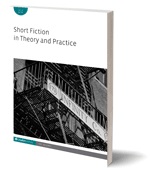
Charles E. May’s assertion that Junot Díaz’s "Miss Lora," 2013 winner of The Sunday Times EFG Private Bank Short Story Award, is not outstanding is challenged. The current discourse on teacher–student sex scandals is used to inform a reading of Díaz’s story that reveals its success under critical scrutiny. Sheila L. Cavanagh’s sociological work on the sex scandals surrounding white female teachers is incorporated alongside James Knoll’s work as a psychologist on profiling sexually predatory female teachers. "The Smoker" by David Schickler and "These Things Happen" by Ray Bradbury are also analysed as fitting into the trope of students and teachers developing relationships that fall outside the bounds of the white heteronormative master narrative. May’s claim that short stories succeed in "defamiliarizing" our everyday constructs of reality is shown to occur in each story in relation to our expectations of the sexual boundaries between teachers and students.
Published in Short Fiction in Theory and Practice (Vol. 4.1, April 2014)

"Proteus Bound: Pinning Girl with Curious Hair with Short Story Theory"
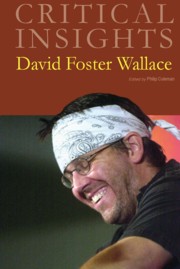
Performativity ties the stories in Girl with Curious Hair together, an increasingly reflexive perspective on reflexive perspectives accruing with each piece. This chapter analyzes some of the modes at work throughout Wallace’s first collection of short stories. Kasia Boddy, with specific regard to this collection, highlights “Wallace’s deep interest in what he saw as the fundamental difficulty of human interaction and … the ways in which he presented that difficulty as metaphysical, moral, and linguistic” (“Fiction of Response” 38-39), particularly in relation to contemporary philosopher Stanley Cavell and Russian Formalist Mikhail Bakhtin. Considering the same difficulty alongside the work of short story theorists like Susan Lohafer and Charles E. May, the case builds even stronger. The book’s diversity of situations across the self-to-other divide offers what a single story could not. As such, Girl with Curious Hair stands as a Protean project, a second-book effort wherein the author transmogrifies his style with each successive story to argue for a rejuvenation of humane connection via fiction, presenting modes as mere dressing upon the art’s fundamental potential to relate between and even bridge self and other. Proteus of Greek mythology, despite his many forms, maintains one thing: his identity as Proteus, immortal Old Man of the Sea, who, if pinned, “will tell you the way to go, the stages of your voyage.” In offering Girl with Curious Hair as a cohesive project, Wallace takes on this compass rose of responsibility, urging a direction for fiction leading both from and toward the development of empathy.
Published in Critical Insights: David Foster Wallace, Edited by Philip Coleman (Salem Press, 2015)

"Transformation Through Make-Believe in Wizard of the Crow"
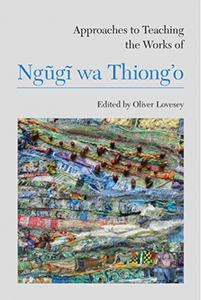
In his review of Wizard of the Crow for The New Yorker, John Updike concluded that: “This ambitious, long-mulled attempt to sustain the spell of oral narrative in the era of electro-visual distractions leaves the Wizard where the reader finds him, up in the air.” On the contrary, Wizard of the Crow, Ngũgĩ wa Thiong’o’s longest novel, may paradoxically be his most accessible. Not only does he construct the pan-African experience in the postcolonial twenty-first century, he also draws from the continent’s rich literary tradition and places its people in a global context. It is a long work, 766 pages in its first hardcover American edition, which may at first seem daunting to students but it will help to point out to them that the chapters within each of its six books are quite short, some of them just a page. Furthermore, one could teach one book at a time, giving students digestible intellectual nourishment. Luckily for the instructor, the novel has what undergraduate students hunger for: pathos, intrigue, and flights of comedy, high and low. Its satire is tempered with sadness and wisdom and ultimately gives us a hopeful take on transforming not just Africa but the whole world. Wizard of the Crow is also perfect for introducing students to African literature because it references and even points the way to other important novels by African writers, such as Tutuola’s The Palm-Wine Drunkard, Armah’s The Beautyful Ones Are Not Yet Born, Peter Nazareth’s In a Brown Mantle and The General Is Up, not to mention Ngũgĩ’s own Devil on the Cross. It also humanizes many challenges African nations face in the contemporary world: AIDS, military dictatorships, independence and globalization.
This essay serves to highlight some of the threads in what is a complicated novel. The first section explores Ngũgĩ’s creation of Aburĩria, a fictitious African nation, as the setting of his work. Section two draws out the role of pretending as if affects the lives of the main characters and shapes our understanding of Ngũgĩ’s hopes for Africa and the world. The third and final section reiterates the argument for Wizard of the Crow’s use in the classroom.
Published in Approaches to Teaching the Works of Ngũgĩ wa Thiong'o, Edited by Oliver Lovesey (MLA, 2012)

"The Long Reach of Green Shadows: Ray Bradbury's Memories of Ireland"
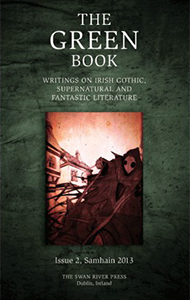
Ray Bradbury (1920-2012) was a connoisseur of nostalgia, an artist who drew again and again from his own longed-for past. So it was that when Bradbury spent six months in Ireland adapting Herman Melville’s Moby-Dick for the silver screen, his alter-ego Douglas was sure to follow. This essay follows both the biographical dimension of how those months in Ireland inspired Bradbury and manifested in short stories and the novel Green Shadows, White Whale (1992). Stories considered include “The First Night of Lent” (1956), “A Wild Night in Galway” (1959) , “The Beggar on the O’Connell Bridge” (1961), “Getting Through Sunday Somehow” (1962) , “The Anthem Sprinters” (1963), “McGilahee’s Brat” (1970), and “Banshee” (1984).
In his final years, Bradbury often credited his experiences in Ireland as having established him financially secure as a writer with a respected reputation. Where many narratives of a stranger in a known land will use local landmarks to excess, Green Shadows, White Whale is shown to be innocent of that literary misdemeanor. Dublin is largely limited to Grafton Street, St. Stephen’s Green, and the O’Connell Bridge. The tales are not so much parody of Ireland’s fight for independence as they are Bradbury’s pastiche of the stories he heard told in pubs by the people he met. Bradbury’s summation of the Irish people appears to be based on the observations not of a Hibernophile, but a working visitor. As such, these works mark Bradbury’s way of giving thanks to Ireland for providing the ground upon which he crossed the threshold into his own maturity.
Published in The Green Book (Issue 2, Samhain 2013)

"Review: Emerald City (NBC TV)"

This is a review I wrote of Emerald City, a TV series that lasted a single series (despite an ending offering ground for a second).
As a childhood devotee of L. Frank Baum’s Oz books and Walter Murch's Return to Oz (1985), I was eager to see how it had been reimagined in the era of Game of Thrones. Oz has absolutely upheld some dark iterations of its magic over the years, so a bit of grit was not going to be anything entirely new to the world that exists somewhere over the rainbow.
Despite some intriguing aesthetics and earnest performances put in on all sides, the Oz-ness of this adaptation failed to capture me with its story.
A link to my full review can be found below.
Published in Irish Journal of Gothic and Horror Studies (Issue 16, Autumn 2017)

"Bill"

This brief character study was my very first publication in print and it came just as I was leaving Portland to go study American literatures in Ireland. As such, it felt very much like the City of Roses had given me a peck on the cheek as I struck off to go find out what was going on in another of the world’s little green pockets. This piece was based on one of my regular customers at Finnegan’s Toys & Gifts, an old timer named Bill who often came by to tell me about his life’s greatest adventures. The editor paired it with visual designer Gabrielle Drinard, who took a painting of a horse Bill gave me and composed the entire page around it.
Our Portland Story, Volume 1 is the first Our Portland Story book released and represents the work of 77 authors and 63 designers. Stories included in Volume 1 book reveal historically important architecture, a description of a meaningful tattoo, observations from a TriMet bus ride, the story of a scooter-riding mom in pink, and many more.
Published in Our Portland Story, Volume 1 (Sep. 2010)

